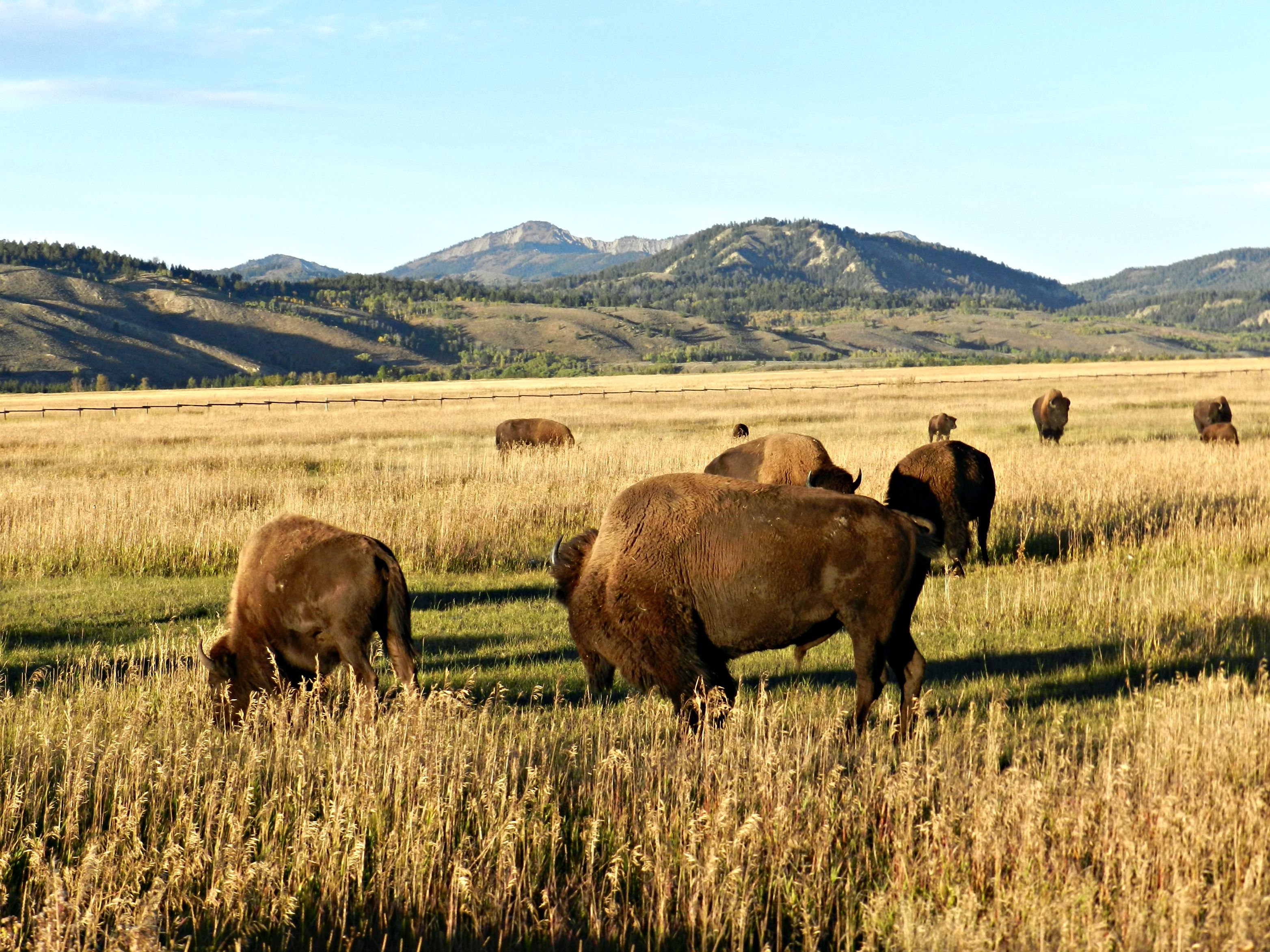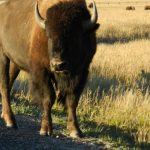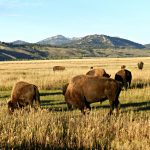Mother Nature’s adaptations fascinate me. Think of chameleons that change color to blend into environments until they’re essentially invisible. Think of giraffes with extraordinarily long necks that allow them to wrap their tongues around leaves far out of reach of less endowed creatures. Think of skunks loaded with potent stink bombs ready to send attackers running. Think of bison perfectly designed to survive winter on the plains.
Kansas’ state mammal, which is also the iconic flag symbol of Wyoming, is perfectly designed to thrive both winters roaming over the prairie. Interested spectators can study small herds local ranchers raise in fenced pastures. They’ll note that due to limited acreage, producers supplement their feed. Until I saw great herds spread over miles of Teton and Yellowstone National Park grasslands, I didn’t have a true sense of what the first Kansas settlers saw. Then winter photos Wyoming photographers shared helped me understand Mother Nature specially adapted these critters to live in a harsh landscape.

Bison are similar enough to cattle to understand their family units and grazing habits. What I didn’t recognize were the purposes of that wooly, triangular head and broad chest. Once I saw snapshots of Yellowstone bison plowing through deep snowfields and even higher drifts, I realized those features guarantee winter survival. That curly, thick mane around the face, neck, and chest protects delicate skin as they shovel their lips down to grass buried under feet of frosty white stuff.
Seeing that triangle-shaped head cut through snow toward belly filling nutrition makes me wonder if the snowplow’s creator didn’t watch these beasts clearing their way to dinner. While that sculpted head serves as a precision machine, the broad chest works much like a cowcatcher on a train does. It shoves anything blocking a buffalo’s path to either side.
My friends’ photos didn’t reveal just bison. They also included shots of deer, elk, and antelope. Bony hips, spines, and too defined ribs make it clear harsh winters take a toll on narrow-bodied creatures. They don’t have that broadness that makes it easier to get to food. Clever ones, however, take advantage of the buffaloes’ strength. One picture revealed pronghorns following a trail a bison herd broke open. Not only is this range a place where species play, it also reveals one critter benefitting from another’s adaptation to the elements.
Snow photos lead viewers to think aha–winter wonderland! Forget that image. Snowfields hide landscape flaws. Viewers don’t see erosion, rotting carcasses, and mangled plants under that crystalline blanket. Frequently, those six-sided flakes land artfully, coating leaves and critters so they look like they’re trimmed with glitter. A frosted coat and horns makes a big ol’ buffalo look almost delicate. It’s easy to respond with a heartfelt, “How pretty!”
The reality is that winter creates harsh, hard-to-survive conditions. Those snow-tipped noses, ears, and lips make these grass-eating machines vulnerable. Without wiry, thick tresses and that broader than an axe handle chest, these creatures wouldn’t survive prairie blizzards as well as they do. They’re a fine example of Mother Nature’s best design skills.
Native Kansan Karen Madorin is a local writer and retired teacher who loves sharing stories about places, people, critters, plants, food, and history of the High Plains.


